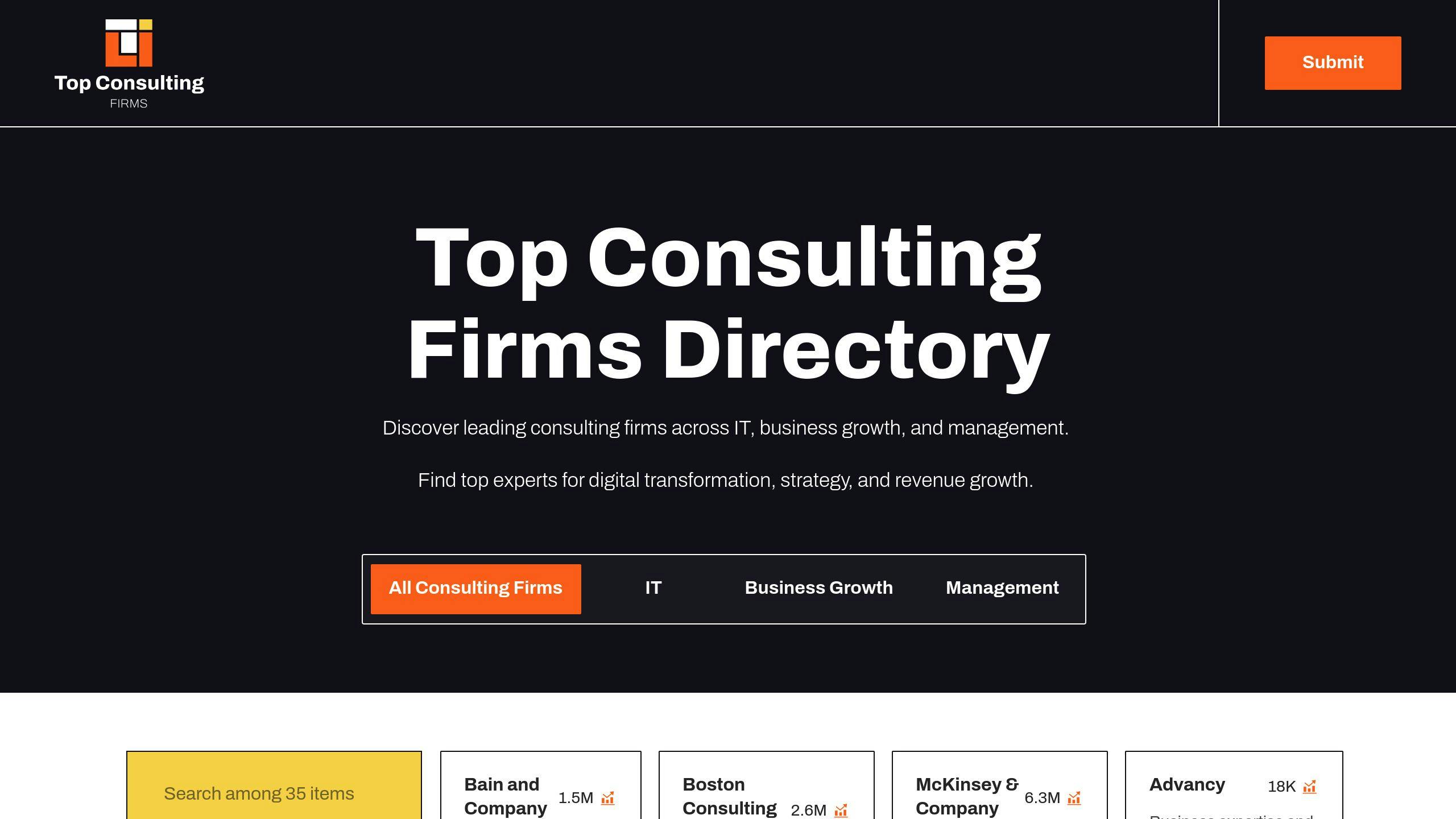- Understand Regulations: Identify the rules that apply to your business, like GDPR, HIPAA, or SOX. Use a compliance matrix to map regulations to processes.
- Assess Risks: Conduct a Business Impact Analysis (BIA) to find critical operations, recovery timelines, and potential risks.
- Build a Compliance-Focused Plan: Ensure your continuity plan covers activation protocols, recovery steps, and communication with regulatory bodies.
- Test and Update Regularly: Run simulations and audits to keep your plan current and effective.
- Leverage Technology: Use tools like automated monitoring systems, cloud platforms, and secure document management to simplify compliance.
Quick Tip:
Compliance isn’t just about avoiding fines - it reduces risks, builds trust, and keeps your business running smoothly during disruptions. Read on for practical steps, tools, and expert resources to get started.
Steps to Achieve Compliance in Continuity Planning
Reviewing Relevant Regulations
Start by identifying the regulations that affect your business operations. These can vary across different levels, such as international, federal, and industry-specific standards. Here's a quick breakdown:
| Regulatory Level | Examples | Key Requirements |
|---|---|---|
| International | GDPR, ISO 27001 | Data protection, security standards |
| Federal | SOX, CCPA | Financial reporting, privacy |
| Industry-specific | HIPAA, PCI DSS | Healthcare data, payment security |
To stay organized, create a compliance matrix. This tool maps regulations to specific business processes, helping you pinpoint gaps and prioritize what needs attention.
Once you’ve outlined the relevant regulations, assess how potential disruptions could impact both compliance and daily operations.
Conducting a Business Impact Analysis
A Business Impact Analysis (BIA) is essential for identifying critical operations and understanding how disruptions might affect them. Here’s what to focus on:
- Financial impacts caused by operational interruptions
- Critical functions and recovery timelines (often referred to as RTOs)
- Dependencies on key resources like technology and staff
This analysis will help you connect critical operations to compliance needs, which will then feed into your continuity plan.
Creating a Continuity Plan with Compliance Measures
Your continuity plan should address operational resilience while meeting compliance requirements. Consider these key elements:
| Component | Compliance Consideration |
|---|---|
| Activation Protocols | Ensure triggers align with regulations |
| Response Teams | Assign roles that focus on compliance |
| Recovery Steps | Clearly document regulatory requirements |
| Communication Plans | Include steps to notify regulatory bodies if needed |
Testing and Updating Continuity Plans
Testing is crucial to ensure your continuity plan stays up-to-date with regulations and operational demands. Industry standards recommend reviewing and updating plans at least once a year [2].
Set up a structured testing schedule that includes:
- Tabletop exercises
- Technical recovery tests
- Full-scale simulations
These tests will help verify both compliance and your overall resilience.
If you need expert help, consulting firms specializing in continuity compliance can provide guidance. You can explore resources like the Top Consulting Firms Directory to find qualified professionals to assist with creating and maintaining your plans.
Using Technology to Support Compliance
Compliance Tools and Automation
Automated systems play a key role in reducing errors and ensuring consistent adherence to regulations. Here's how technology helps meet compliance requirements:
| Function | Benefit | Implementation Example |
|---|---|---|
| Data Backup | Scheduled backups with integrity checks | Regular incremental backups with integrity checks |
| Compliance Monitoring | Real-time tracking of regulatory requirements | Automated alerts for compliance gaps |
| Documentation Management | Centralized storage and version control | Secure document repositories with audit trails |
| Communication Protocols | Streamlined emergency notifications | Automated messaging systems with delivery confirmation |
Recent studies show that using automated compliance tools can cut manual monitoring efforts by up to 70%, while also improving accuracy [3]. These tools create detailed, tech-driven audit trails, making compliance verification much easier.
While automation simplifies specific tasks, cloud platforms provide scalable solutions to address broader regulatory challenges.
Cloud Solutions for Continuity Planning
Cloud platforms offer features that support both operational resilience and compliance needs:
| Cloud Feature | Compliance Benefit | Business Impact |
|---|---|---|
| Geographical Redundancy | Meets data residency regulations | Ensures access during regional disruptions |
| Automated Failover | Reduces downtime during system issues | Maintains service levels within regulations |
| Access Control | Role-based security protocols | Enhances data protection compliance |
| Version Control | Keeps historical records | Simplifies audit processes |
Cloud platforms also make continuity testing easier by allowing quick setup of simulated environments. Look for platforms with GDPR-aligned frameworks, regular security updates, detailed audit logs, and scalable storage options.
For organizations navigating technology implementation, consulting firms with expertise in compliance technology can offer tailored advice. These firms can help identify the right tools and ensure they meet specific regulatory standards [Top Consulting Firms Directory].
Practical Tips for Maintaining Compliance
Conducting Audits and Simulations
Did you know that 40% of businesses never reopen after a disaster? [1] This statistic underscores why regular testing and verification are crucial. Audits should cover areas like documentation, technical systems, simulations, and compliance checks.
| Audit Component | Key Focus Areas |
|---|---|
| Documentation Review | Policy updates, regulatory changes, process updates |
| Technical Systems Check | Backup systems, recovery steps, security protocols |
| Full-Scale Simulation | Emergency response, team coordination, recovery time |
| Compliance Assessment | Regulatory requirements, industry standards, policies |
Simulations are especially helpful for testing how well your organization meets regulations during disruptions. Make sure to document and analyze each exercise to find areas where compliance can be strengthened.
Engaging Stakeholders and Communicating Clearly
Audits and simulations are important, but they’re not enough on their own. Keeping stakeholders involved is key to embedding compliance into daily routines. A clear structure ensures everyone knows their role in staying compliant.
| Stakeholder Group | Key Role in Compliance |
|---|---|
| Executive Leadership | Oversight and resource allocation through regular briefings |
| Department Heads | Managing operational compliance and team training |
| IT Teams | Monitoring systems and ensuring technical compliance |
| External Partners | Verifying third-party compliance in quarterly reviews |
To keep communication effective, set up standardized protocols, hold regular training sessions to update responsibilities, and create feedback channels. This helps address concerns and refine processes over time.
These tips will help ensure your compliance efforts stay on track. For extra support, consulting firms can offer tailored advice to implement these strategies effectively.
sbb-itb-97f6a47
The Official Guide to Legal and Regulatory Compliance in Business Continuity Management
Resources to Help with Compliance
Achieving compliance requires the right mix of tools and expertise. Below is a quick guide to some essential resources that can help streamline your efforts:
| Resource Type | Benefits | Ideal For |
|---|---|---|
| Compliance and Risk Tools | Automates monitoring, provides real-time alerts, identifies threats, and analyzes impact | Day-to-day compliance tasks and risk tracking |
| Document Management Systems | Offers centralized storage, version control, and audit trails | Managing policies and procedures |
| Training Platforms | Facilitates staff education, tracks certifications, and promotes compliance awareness | Employee training and development |
Top Consulting Firms Directory

Expert advice is crucial when it comes to compliance in continuity planning. The Top Consulting Firms Directory connects businesses to specialists in areas such as:
| Consulting Focus | Services Offered |
|---|---|
| IT Compliance | Cybersecurity protocols, digital transformation, and infrastructure reviews |
| Business Growth | Risk management, operational efficiency, and market-related compliance |
| Strategic Management | Continuity planning, regulatory adherence, and process improvements |
When choosing a consulting partner from the directory, take these factors into account:
- Industry expertise: Choose firms familiar with your specific regulatory landscape.
- Technical capabilities: Ensure they provide the tech support needed for modern compliance demands.
- Proven track record: Look into their success stories in implementing compliance solutions.
The directory helps businesses find consultants who can improve compliance systems and offer tailored advice to maintain regulatory standards. These professionals collaborate with your team to enhance current compliance structures and address any gaps in your continuity plans.
Using these tools and expert guidance not only helps you stay compliant but also strengthens your business's ability to adapt and thrive in the future.
Conclusion
Compliance plays a crucial role in continuity planning, helping organizations stay resilient and prepared for long-term challenges. By aligning regulatory requirements with operational strategies, businesses can create stronger foundations for the future.
A solid compliance-driven continuity strategy rests on three main elements:
- Thorough assessments: Conducting a detailed business impact analysis helps pinpoint vulnerabilities and critical operations.
- Effective use of technology: Tools like automation, cloud platforms, and compliance software make it easier to monitor changes, track regulations, and get real-time alerts.
- Ongoing updates: Regularly reviewing and updating your continuity plan ensures it stays relevant to both regulatory shifts and organizational needs.


